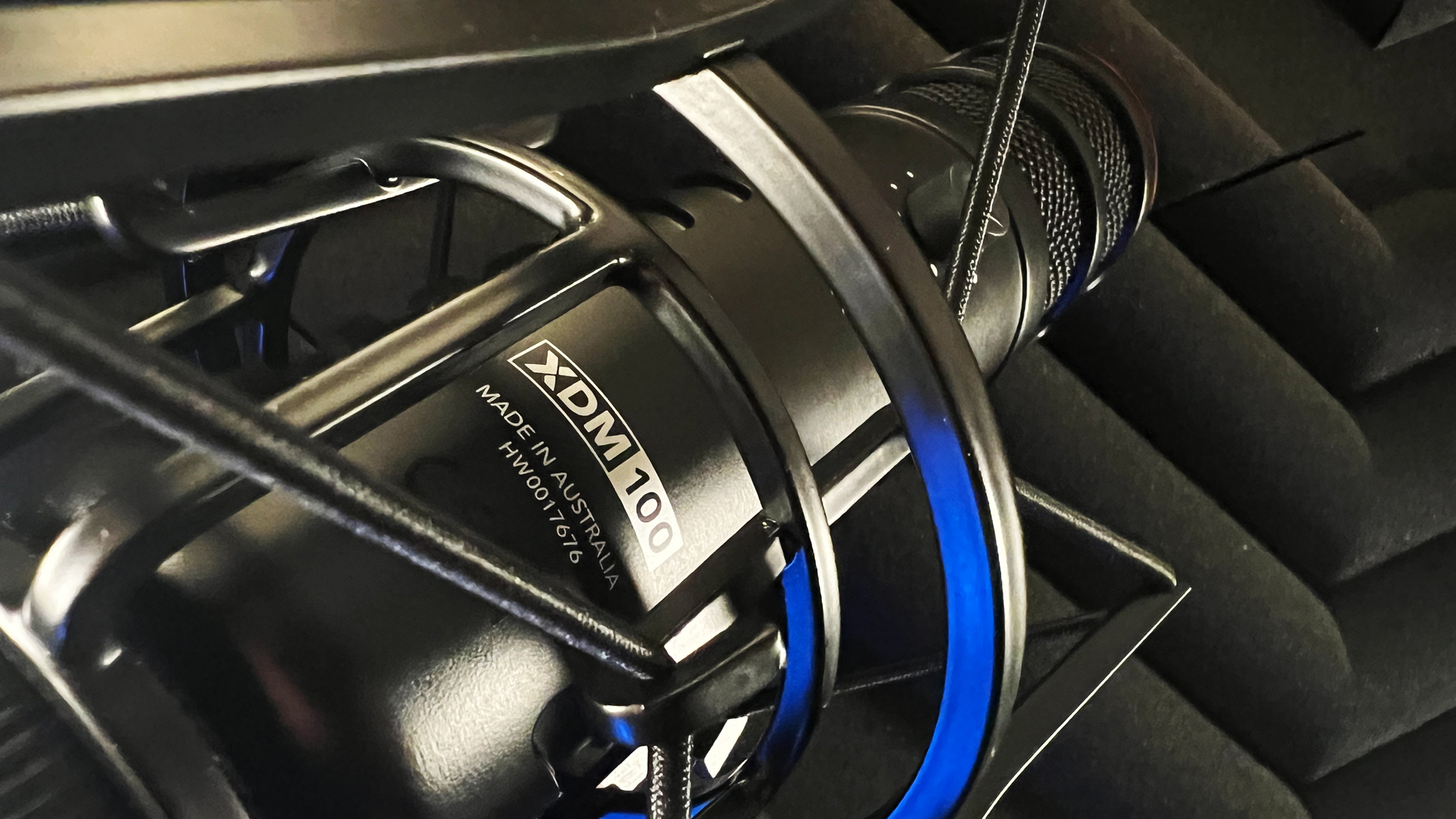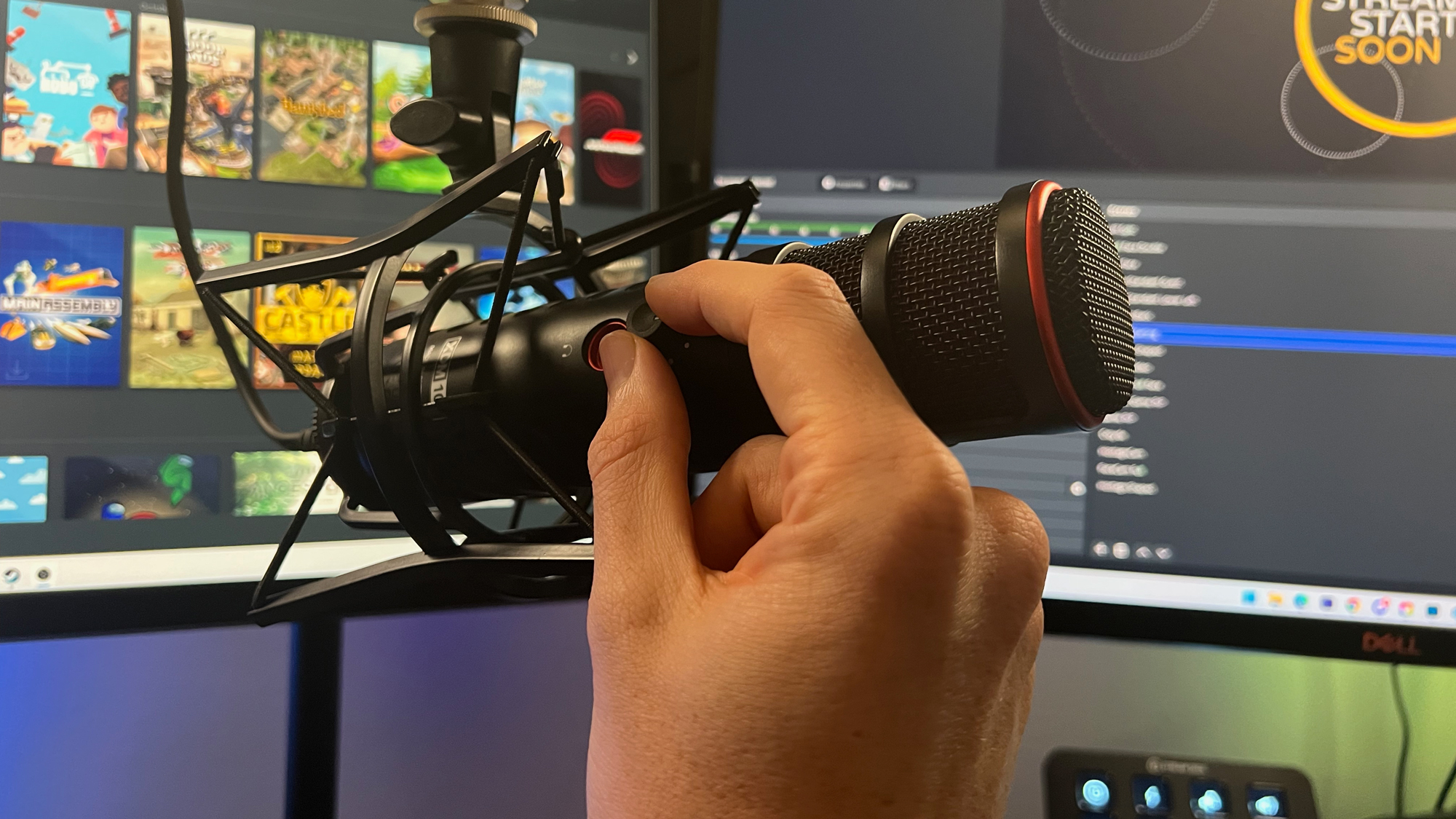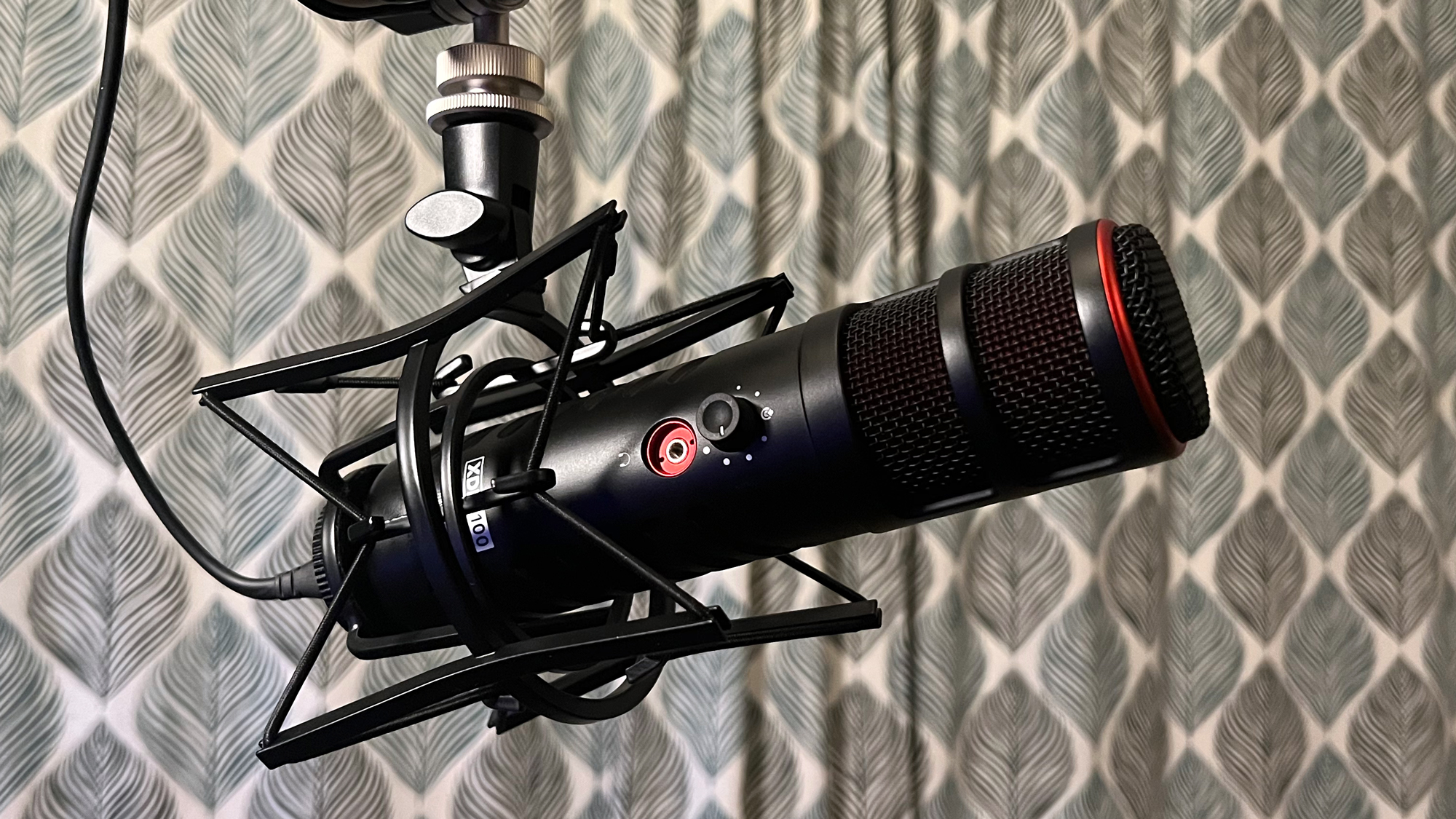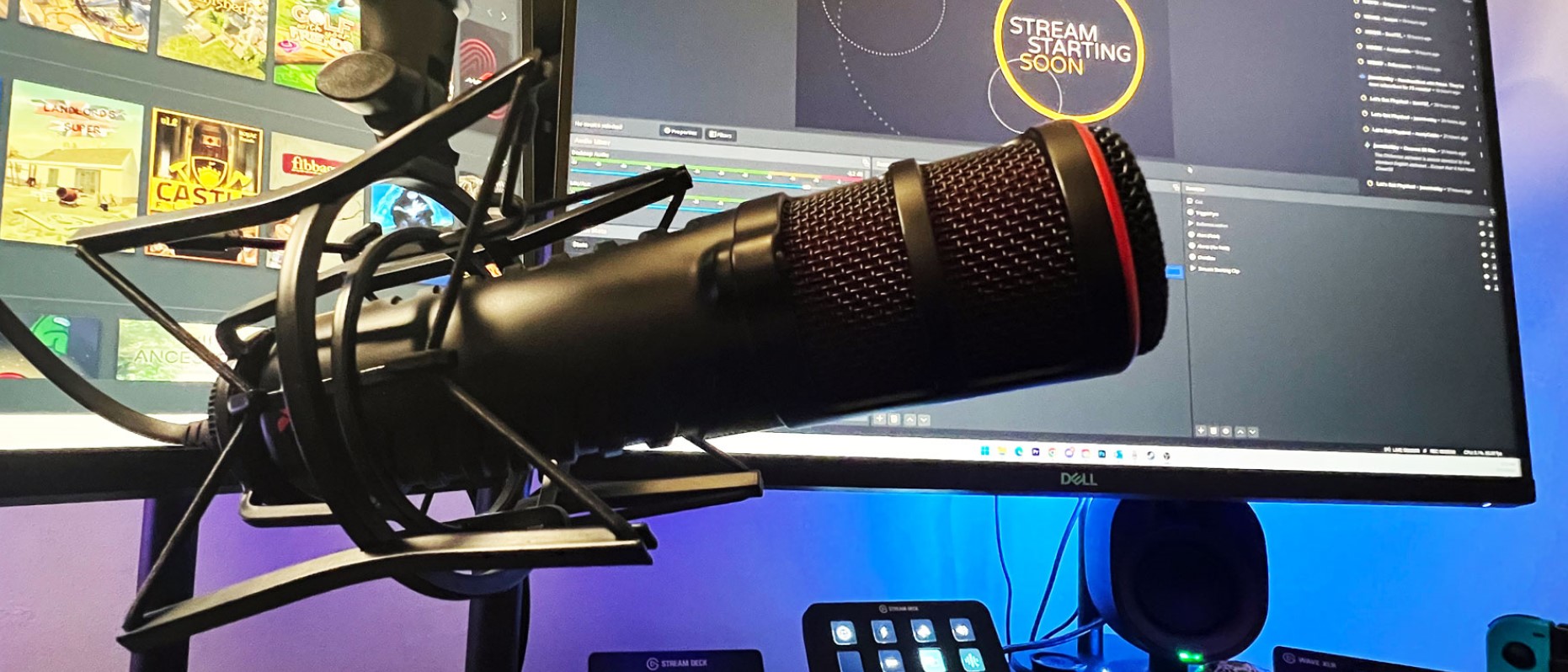GamesRadar+ Verdict
The RODE X XDM-100 is another belting microphone from the audio company. It does demand a steep price of admission, but for those who commit, it’s a great microphone that will deliver excellent results.
Pros
- +
Impressive audio quality
- +
High-quality build
- +
Shock mount and pop filter included
Cons
- -
Very big and surprisingly heavy
- -
Supporting UNIFY app needs work
Why you can trust GamesRadar+
RODE is evolving, well known as an industry leader in professional audio the Australian brand is now eyeing a new market with the launch of RODE X. Officially coined as the ‘The Streaming and Gaming Division’ of RODE, the launch sees the introduction of the RODE X XDM-100, a Dynamic USB microphone fine-tuned for content creation and looking to make a mark in the streaming for gamers market.
All the right ingredients are there, but at $249/£269 it arrives at the very top end of the USB mic price range so has big boots to fill if it’s to take on some of the best microphones for streaming.
Design & features
If you’ve explored the RODE range before then the XDM-100 will be a familiar-looking beast. Take a RODE Procaster, make the silver parts red and you’re 95% of the way to an XDM-100. There’s a bit more going on here than that of course, but the core body of the mic is incredibly similar and that’s no bad thing.
As you’d expect from a premium brand with the reputation of RODE, the XDM-100 features an impressive build quality all over. It’s clear that no corners have been cut and nothing feels cheap or paired back. Even just holding the mic you get that studio equipment vibe, it feels properly professional and will be night and day from the toylike feeling of some cheap microphones.

The XDM-100 is hefty in just about every way, at more than 21cm long the barrel of this mic is the largest I’ve tested by quite a margin. Add in the (rather generously included) PSM1 Shock Mount and the whole unit becomes 11cm wide too - for tighter setups that’s a huge chunk of space. It’s a dominating presence and did take a fair amount of consideration when adding it to my setup. Finding a spot that let me correctly address the end of the mic, from the right distance, without it annoyingly obscuring my monitor was tough going.
You’ll need a mic arm for the XDM-100 and will want to be careful with the one you choose. RODE’s own PSA1+ handled the task perfectly well, albeit with a little bouncing after making adjustments, but that’s no real surprise as when housed in the shock mount the XDM-100 weighs in at over a kilo. That’s more than double the weight of the Elgato Wave DX and I found it surprisingly heavy every time I picked it up. It’s not really a major issue of course, but some cheaper mic arms might struggle to stably handle the weight.

Performance
One of the main benefits of a USB microphone is the simplicity of setup and that simplicity is a real strength of the RODE XDM-100. One cable, straight into my gaming PC, and I was off and running with impressive audio quality from the start. Interestingly the included 3m cable is USB-C on both ends, something to be aware of if your motherboard is a couple of years old.
It shouldn’t come as a surprise that a microphone from RODE sounds great, and this microphone from RODE X sounds great. It delivers on those close feeling ‘podcast voice’ characteristics that creators often look for in a dynamic microphone, with particularly warm and rich vocals. In testing on my livestream, viewers pointed out there was a distinct smoothness to my vocals compared to other microphones I’ve used and everything sounded nicely rounded (listen to the audio test below for an insight into that). This was at the expense of some brightness and clarity, but that’s a matter of personal preference.

The RODE X XDM-100 does a good job at rejecting unwanted off-mic noise like the clatter of a mechanical gaming keyboard and goes some way to accounting for an otherwise poorly insulated studio too. Compared to a condenser microphone you’ll find less residual room noise and less bounce back off hard floors and surfaces, handy for those without a dedicated streaming space.
The XDM-100 performed impressively straight out of the box with no post-processing, but for those wanting to hone their sound, RODE has also launched the UNIFY app. Like offerings from other brands, it gives creators the option to divide up and control different audio sources, while also offering a handful of basic EQ controls for RODE microphones. For now though the app feels a little undercooked, it works fine for the most part but there are a few rough edges and it just doesn’t offer a huge amount of value.

Overall - Should you buy the RODE X XDM-100?
While the XDM-100 may be the debut offering of RODE X it’s clear it builds off years of experience and development. For a USB microphone, it is absolutely faultless when it comes to audio performance and it delivers a sound quality in line with its premium price.
There’s plenty to like about the high-end XDM-100, except perhaps that high-end price point which may keep it at arms length for the streamers it's aimed at. For those who can afford it and who do invest, however, it’s a great microphone that will deliver excellent results.
How we tested the RODE X XDM-100
I used the RODE X XDM-100 in my studio setup for a couple of weeks for both livestreaming and general PC audio. It was mounted on a RODE PSA1+ mic arm using the included PSM1 Shock Mount and had the included pop filter attached throughout.
You can read more about our approach to gaming tech and products in the full GamesRadar+ Hardware Policy.
Complete your streaming setup with one of the best capture cards and the best webcams.
Alex is a streamer who has been creating gaming content for over a decade, streaming on Twitch regularly across the last five years. With a degree in film and a background in sports media, you'll find him jumping between 60,000 seat stadiums and his Animal Crossing island (where he's growing pears, in case you were wondering).




